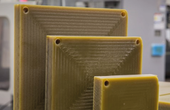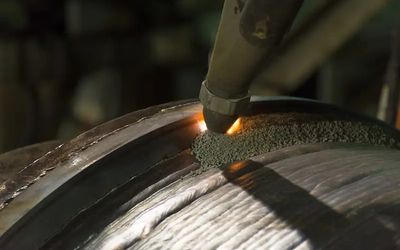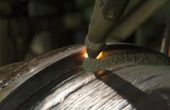VMX Detectable Plastics for Food Processing Units
Three-way detectable plastic materials for the food and pharmaceutical processing and packaging industries.
Technical Specifications
| Product Type | Detectable Plastics |
| Detectability | Visual, Metal, and X-Ray |
| Compliance | FDA, EU 10/2011 Approved |
| Plastic Types | POM-C, UHMW-PE, PA6, and PEEK |
| Applications | Food processing, Pharmaceutical processing and packaging industry, |
Overview
VMX-detectable plastics from Mitsubishi Chemical Group present a range of highly detectable plastics, i.e., visual, metal, and X-ray. Its three-way detectability provides higher safety for food-safe plastic materials, a critical aspect of the food processing and pharmaceutical industry. The food-grade plastics offer a reliable option for the processing and packaging industries. With a versatile range of plastic materials, several customization options exist for various client needs while ensuring full compliance, performance, and detectability.
Three-Way Detectability for Food-Safe Applications
VMX Plastics are designed for food-safe applications ranging from cooking to mixing to guiding and transportation applications. All plastics feature an evident blue color for easy visual detection. It’s an all-in-one solution for all food types and detection technologies, providing significant advantages for global OEMs.
Its three-way detectability features enhanced particle detection from 2mm in visual, metal, and x-ray. Also, it complies with the regulatory requirements from the FDA and EU 10/2011 Food Grade standards and global availability of high-quality material.
All VMX plastics are designed to withstand challenging cooking environments, offering resistance to high temperatures and corrosive chemicals. This makes it ideal for clean-in-place (CIP) and sanitize-in-place (SIP) applications in food processing.
Versatile Food-Grade Detectable Plastic Options
The selection of plastic materials includes various materials that vary in detectability mechanisms, i.e., visual (blue-colored), X-ray, and metal detectability. These materials offer easy traceability to ensure food safety during processing and packaging.
First is Acetron POM-C copolymer polyoxymethylene, a specialized acetal copolymer intended for food processing and packaging applications, ensuring traceability to prevent physical contamination. It complies with EU 10/2011 and FDA 21 CFR § 177.2470 standards and has robust mechanical strength, stiffness, and impact resistance, meeting essential safety criteria in the specified industries. Acetron has applications in scrapers, funnels, extrusion dies, cutting blades, etc.
Second is the TIVAR® Ultra High Molecular Weight Polyethylene (UHMW-PE), a metal-detectable, food-grade material designed for wear and abrasion resistance in food processing and packaging. The material has use cases in mixing paddles, bushings, rollers, funnels, and chain guider elements.
Third is Nylatron® Polyamide 6 (PA 6), a type of nylon that provides visual, metal, and x-ray detectability for straightforward traceability in the food industry's contamination detection systems. It offers good mechanical strength, stiffness, impact strength, and notable wear resistance. These properties of the material make it suitable for reliable and durable use of thrust washers, seals, pulleys, and rollers.
Lastly, there is Ketron® Poly-ether-ether-ketone (PEEK), a metal-detectable variant that complies with FDA and EU standards, ensuring safety for various applications. It boasts extreme dimensional stability, high strength, and temperature resistance. It suits food-approved parts needing high stiffness without reinforcements. Resilient to temperatures exceeding 130°C (266°F) and resistant to steam, PEEK provides a reliable solution for applications demanding stringent performance and compliance requirements, such as filling pistons, scrapers in high-temperature applications, manifolds, guiders, and valves, etc.
References
Recommended Specs
Continue Reading
Submerged arc welding is a standard industrial process wherein an arc is formed between a workpiece and an electrode. It was invented in 1935 by the E. O. Paton Electric Welding Institute in Kyiv, Ukraine as a driving force behind the Second World War. One of the most notable applications of this invention is the T34 military tank.










